A look at the people of Talesh and the language of Talesh
Talshan and Talshi language :
Strabo, a well-known Greek scientist who wrote his book on geography two thousand years ago, in a discussion of (( Arturopathic medicine )) that he wanted Azerbaijan Currently, the mountain tribes call it this way : Kortian, Amardan, Taporan, Kadosian . Of these four tribes, the first three are known and there is more or less knowledge about each of them . However, there is no mention of the Kadusians or Kadusians, who, according to the same scholars, were a large, powerful and famous tribe. . (1).
…
Gershman He writes in the history of Iran : Darius II ( 424-405 BC ) At the end of his life, he led the battle against the Cadusians and died shortly after, leaving the crown to his eldest son, Ardeshir II. . ( Between Ardeshir II 405-359 BC also fought a war with the Caduceus, which did not have a specific result . ) Ardeshir III ( 359-338 BC ) With the utmost determination, he suppressed the Cadusians and put down the rebellion of the satraps . (2).
It is undisputed that the settlement of the Kadusians was in the mountains of northeastern Azerbaijan, where the Talshan settlement is now. . It should be said : Neither the Kadusians have disappeared, nor have Talshans come from somewhere else to replace them . These Talshan are the children and survivors of the same Kadusan and the name (( attempt )) No longer a name (( Kadus )) is . (3).
Dr. Siros Ezadi also in the book of essays Self-writing with the title ” The emergence of the Achaemenid Iranian government ” From ” Oh you . And . Piankoff – i.v. pyankov has translated, which in part reads like this : Cyrus had alliance relations with the Caduses . This point only ” Whose ” informs and says when Cyrus is still at Astyages gate ( The king of the Medes, the son of Hovakhstra ) was, the king of Medes sent him to the Cadusians to reach an agreement with their ruler about the alliance, and it seems that Cyrus drew the Cadusians to him, and after that, at the fateful end of the fight with Astyages, we can think that the eye has been on the way to receive help from them . It is difficult to say how true this point is . However, there is no doubt that the characteristics of the Kadusi relations with the king depict the present and the day of the Kadusi era for him. . Right, when Ketsi came to the court of Ardashir II, this king campaigned against the Kadusians, who did not obey him, and made an alliance with them. . In earlier times, things were different . In the time of Darius I, the Cadusians ( In the structure of the 11th satrapy, following the writings of Herodotus ) They were subjects of the Persian Empire . (4).
Trying language Within the northwestern group of Iranian languages, it has a certain characteristic, especially in terms of vocabulary, which surprised the first people who were interested in this language. . Although, on the contrary, Khanikov calls this language "dialectic." … He knows exactly the same Gilki dialect ! In fact, the Talshi language is an intermediate language between Gilki and Tati, which is closer to Tati, and the language of Tati Kolor is easily learned by the Talish of Shanderman and vice versa. . (5).
Talshi is prevalent in the Republic of Azerbaijan, in the Lankaran plain and in the mountainous areas west of it . Outside the borders of the Soviet Union ( Former ) , attempts in areas in the northwest of Iran, on the coast of the Caspian Sea and on the border between Iran and the Soviet Union ( Former ) is also common . Some of the speakers try to 1976 about 220000 It was a body 150000 One of them in the Soviet Union ( Former ) have been residents . Talshi Tirmeh is one of the north-western Iranian dialects that were popular in Azerbaijan in the past . The couplets that were obtained in the Ardabil region and date back to the 10th century / They belong to one of these dialects and were written in the 16th century . Analysis of these couplets ( By B.V. Miller ) It has been shown that the Ardabili dialect in the 10th century / The 16th has features that make it very close to the current effort . (6).
Avestan language :
( Book ) Avesta is a very rich linguistic material . However, the study of this very important document for linguistic research has many problems . Avesta is a collection of sacred books, containing religious hymns and institutions of Iranian-speaking peoples in the ancient world . Its different parts were composed in different periods and regions and among different Iranian-speaking tribes and peoples . Its oldest parts ( In terms of content ) , that is, hymns written in praise of nature gods ( یشتها ) , were probably written in the second millennium BC . (7).
Before, they had a difference regarding the Avesta language . Some thought it was from the east and others from the northwest of Iran . Since ancient times, due to the existence of the Achaemenid cuneiform lines and their comparison with the Avesta language, it has been proven that the sacred language does not belong to the southwest of Iran. . Recently, due to the lines in Turfan ( Turfan Valley is located in the Tian-šan mountain region in northeastern China's Turkestan . A part of Shapurgan Mani's book, often called "Shapurgan" by Arab and Iranian historians, was found in the mentioned valley. ) It was found that the Avesta language is completely different from the Soghdokhton or Eastern Iranian language . Therefore, today there is no doubt that the Avesta language belongs to the Maghreb of Iran . (8).
Talash and Azerbaijan region :
According to Iranian and foreign researchers and linguists, the language of the Azerbaijani people before the invasion of the Seljuk Turks and the Mongols was the Azeri language. ( Ancient Azeri; Tati - effort ) have been . And the language of Azerbaijani people has been shown by new research that it was very similar to Talshi-Tati language; In fact, it can be said that it was a dialect of the Tati-Talshi language, and now it is called the Tati language or the ancient Azeri language. .
Kiamhar Firuzi writes : Year 431 Hijri is a turning point in the beginning of the return of the language of the people of Azerbaijan . The attack of the Seljuk Turks happened in the same year . (9).
Kasravi says : Azari is one of the big and well-rooted languages such as Kurdish, Mazandarani, Talshi, Gilani, etc., and it is spoken all over Azerbaijan, and it is not just a branch of the Iranian language. . (10).
Babak Khorramdin - Talesh region - Azerbaijan region :
There have also been great men from Iran who led national and justice-seeking movements against the usurping and racist Abbasid rulers. . They called for an active armed struggle against the brutal oppression based on inequality and force. . The biggest revolt of the "Red" Khorramdins was the Great Farmers' War led by Babak, which began in the Talash mountains and spread to Isfahan and Kerman in western Iran. . Khorramdinan's forces repeatedly defeated the Caliph's large army . This uprising gave a hard shake to the caliphate . The only caliph of Mutasim 833-842 AD, by rebuilding the army and appointing Afshin - a Central Asian feudal lord - at its head, he succeeded in making a turn in the war. . Babak's allied feudal lords betrayed him at this time and by seizing new lands, reconciled with the caliph. . In August of the year 837 AD, the last fortress of Khorramdinan - Dezh Baz in Talash mountains - fell after a year of siege. . Babak, who was with an Albanian prince ( = Arani = Azerbaijan today in the Caucasus ) He had escaped, he was handed over to the caliph and he was killed .
Babak, from his name and his wife's name - Khormeh - and the name of the general and his colonel - Azin - which are Iranian names, his national affiliation is clear. . It is stated in the chronicles that Babak's father was from a place near Tisophon and then he went to the border of Azerbaijan. . The beginning of Khorramdin's work means their rebellion against Bani Abbas sultans, written by Y ” An eloquent sentence ” It was in Isfahan and the Batinians became one with them, and after defeat and failure, they went to the mountains, and Babak's rebellion started many years later as a continuation of that rebellion. . In the war with the Abbasid caliphs, Babak captured from Talesh and Armenia to Isfahan and Kerman, and repeatedly defeated the armies of the mercenary Turkish slaves of the caliph, as well as the Arabs, until the caliph Mutasim appointed a Zoroastrian feudal lord - Afshin Asroshei*. He fought with him . (11).
The story of Babak's conversation with Mutassim Abbasi and Babak's execution :
Babak, despite being a great secretary and brave, did not kneel and bow in front of Motasim, and when they asked him the reason, he spoke in eloquent Azari language. ( Talshi - Tati ) He said so : (( Chama is the land of Mardakan, their corn is amoute reed )) that's mean : ( The men of my land have not learned to bow and bow ) . When one of his hands was cut off, he rubbed his blood on his face with the other hand and when they asked him why, he said : (( When the blood of Chama Badnek Bishi, Chama Dim is blue and yellow, my blood is the grass of a horse, the grass of the yellow tail of a bird, I will not be afraid. )) that's mean : ( When the blood leaves the body, the face will turn yellow. ) . They wrote that when they cut off his other hand, he did not protest and did not raise his tail . Babak's death did not extinguish the fire of Iranians' desire for independence, and after a few years, Iran's independence was realized, but the name of Babak Khormedin started to shine like a star in the history of Iran. . (12).
Adaptation of words from Avesta and Talashi languages
Avesta language, Talshi Astara, Talshi Rezvanshahr
Persian | Avestan | an attempt ( Astara ) | an attempt ( Rezvanshahr ) | ||||
That, that side, there | aw- ava | aw- ava ; ew – ayo | And - avar ; Agni – agent | ||||
from | abide - asthma | az- the | az- the | ||||
Eye | Ash- aš ; eyes - Cašman ; Perpetually – andwill beman | chush – Caš | chush – Caš | ||||
what | ahem - before | his mom - or | his mom - or | ||||
Useless, worthless | turn - āgood | waste it - please | Dar- dadār | ||||
fat | Azoti - āright away ; Pew - Pivah | P – pi | Weight – uzyna | ||||
bull | Okhshan - uxšan | what - vešan | Vishnu – vešan | ||||
knife, knife | Carta – trains | Kurdah - order | work- kārda | ||||
Fountain | Khan – xan ; Khan Ni – xanny | Honi – wood | bloody lady | ||||
the night | Khashap - xšap | Show – šof | Show – šof | ||||
Pleased, welcome | Khushnav – xšnav | K sh - shahš | K sh - shahš | ||||
the egg | Tuchman - taoxman | tom - tum | tom - tom | ||||
Tazesh, attack, attack | dresh - youš | seam dare | _ | ||||
To mature, to mature, to complete | Srash - shitš | his secret - seraph = fat - thick - healthy | red f- seraph = It means healthy and young sheep | ||||
Cook | Pacha - paCa | Pate – pātwill be | Address – patwill be | ||||
Bridge | prito – peretav | Pard – pard | Pard – pard | ||||
Burned, mature | Piñayo – pearsāpast | complete – porn = A one-year-old calf is said to no longer drink milk | Parne – pārna = It is called a one-year-old calf | ||||
Boy | face- puss | daughter-in-law zua | daughter-in-law mock | ||||
Brother | Prater - brātar | smell bua | Bad - berā | ||||
eyebrow | Go – bervat | common - bav | Lamb – the same | ||||
quick, fast | ru- rava | cry – rav | _ | ||||
Pehen, animal manure | Syria - sairya | Sill – swill bel | one hundred - sel | ||||
red, red | Sukhra - sweet | Three - swill be | Head - to be | ||||
to be | sati – stay | hisste - hwill beste | hiss - hwill besta | ||||
Dripping, dripping | Sirsk – srask | Basket - villages | Cheleh – CIs it over there | ||||
to give birth, to be born | Zen – i will | forend - sand | _ | ||||
Knowing, having knowledge | Female - i will | زِنی یِه – really | zoned – zonestwill be | ||||
happy, pleased | back šā | sho- šo | city - thisr | ||||
dry | Heshko – hišrule | hash - hešk | _ | ||||
Female | sugar cane - genā | Jin- non | Woman – non | ||||
Persian | Talashi Rezvanshahr | Talshi Astara | Tati Chlor | ||||
Apple | Safe – sip | Sev - sef | Asif - asif | ||||
honey bee | honey not - I have not washedeats | not - meats = Anguine bee – angavin = honey | Number – The | ||||
new - new | seven - ava | Subject – toža / Attention - gorse | seven - ava | ||||
now - now | horse - esa | exponent - to be | us – esā | ||||
white | Isby – isby | SP – spy | horse – esby | ||||
yours – of that you | Ashti – išty | crave - ešthe | Appetite – ešthe | ||||
to swallow | take him away trashwill ben | Aberdeen – too much | O Berdan - from the phrase | ||||
are | Asana – āsen | assen - the ooze | iron āthis | ||||
say | boag - boāj | idol – bot | Taxes – bāj | ||||
Brother | Bad - berā | smell bua | Bad - berā | ||||
to cry | Burma – sheepwill be | Bami Yeh – bamiye | parmesan - in the load | ||||
be alive | Bezhiash – bežycool | Good morning – bežyouš | more meringuescool | ||||
Hedge door | to the other balwill beper | Pelt - balwill bet | – | ||||
big | Mane – yāl | Yule – road = for humans / Gillan – gwill belen = for objects | Cocoon – shit | ||||
Stomach - abdomen | iron – lava | iron – lava = the part inside the stomach for digesting food / you- twill ber = the outer part of the abdomen, the appearance of the abdomen | Terna - terns | ||||
Drip - dripping | challah - CIs it over there | Basket - swill bethe | hill - body | ||||
Hedgehog | Tiye Gore – tya gora | Jazha - žano / Tiye Gore – Tiya Gura ; As if these two animals are different from each other but they are almost similar | Tigne Gore - tygena gora | ||||
how much - how much | choose - Che | ripe - Caxta | how much – Cyou | ||||
bloom | thing – Cback | baby – they are coming | thing – Cyes | ||||
egg | Agle - āgela | Awa- oua | Kha – xā | ||||
Dress | Space – solutionā | First – olat | vacuum - solutionāv | ||||
Fountain | bloody lady | Honi – wood | Khani – xāthe | ||||
sister | Point – xāl(y)ā One y small top L | yes - where | Slow – xāv | ||||
to sleep | خته – reviewwill be | heh- hwill betwill be | Circumcision – lines | ||||
to laugh | sister-in-law xoreste | Sere Yeh - swill bethat one | Khorsan – Xoresan | ||||
to look - to look | Deshta – dyaštwill be | chatted it up - dadašthe | Deshtan – dyaštan | ||||
Boy | daughter-in-law mock | daughter-in-law zua / zah – for = reduce his weight | Za- zā | ||||
wound | Zam – zam | see it - children | Wound – injury | ||||
cool | with – swill bera | Sarin – sarin | Sarin – saryn | ||||
reliance | Sarna – saran | Sangune - sangcloud / Pronunciation of ū in this word It is very sensitive . Maybe there is something in between oh drawn and u . | Chest – swill bethen | ||||
References :
(1)- Pak language, Azeri ancient language, names of cities and countries of Iran; Seyyed Ahmad Kasravi Tabrizi, Ferdous Publications, second edition, Tehran. 1379 , p 221 – 224
(2)- History of Iran, from the beginning to Islam, Roman Girshman, translation : Mahmoud Behfrozi, Jami publication, 4th edition. 1388 , p 190 – 194
(3)- Language Pak, Kasravi, p 225 – 226
(4)- Writings about the history, language and culture of Iran, Dr. Syros Ezadi, Al-Hadi Cultural, Art Institute and International Publications, first edition 1389 , p 134 – 135
(5)- Talesh, an ethnic region in the north of Iran, Marcel Bazen, translation : Dr. Mohammad Amin Farshchian, Astan Quds Razavi Printing and Publishing Institute, 1367 , second volume, p 414 – 415
(6)- Iranian languages, Yusif . M. Eransky, trans : Dr. Ali Ashraf Sadeghi, Sokhan Publications, first edition, 1378 ص 139 – 140
(7)- Iranian languages, Yusif . M. Eransky, p 50
(8)- Avesta ( Ghats ) , Ebrahim Pourdavud, Parmis Publications, first edition, 1389 , p 58
(9)- Azerbaijan is not Turkey ( Turkish is the language ) , Kiamhar Firouzi, Behgar Publications, first edition 1387 ص 87
(10)- Language Pak, Kasravi, p 136
(11)- Writings about the history, language and culture of Iran, Dr. Syros Ezadi - p 232 – 238
(12)- Azerbaijan is not Turkey ( Turkish is the language ) , Kiamhar Firouzi, p 42 – 43
(13)- An Approach to Zoroastrian Times and Neo-Avesta Texts, Hans Reichelt, report : Jalil Dostkhah, Phoenix Publications, first edition 1383 , p 514 – 713 / Avestan words are from this source .
(14)- Farhang Tati and Talshi, Ali Abdoli, Dehkhoda Publications, first edition 1363 , different pages . / The words of Rezvanshahr's effort are from this source .// Talshi Astara's words are from the author of this article .
(15)- Farhang Tati and Talashi, Ali Abdoli, different pages / Talshi words of Rezvanshahr and Tati Kalor are exactly taken from this source . ( Klor - kellor; The center of Shahroud Khalkhal section in the south of Ardabil province; Tati language ) / Talshi Astara's words are from the author of this article .
……………………………………………
[important]
Text collector and sender : Zia – i …
The sender's blog: Lovers of effort ( Astara ) Click here
[/important]


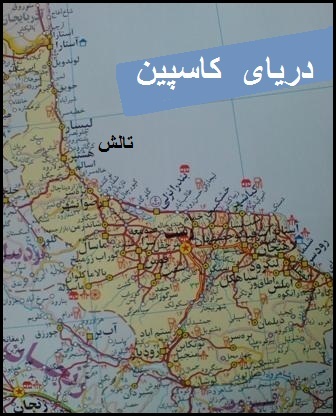
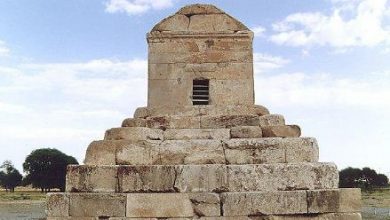
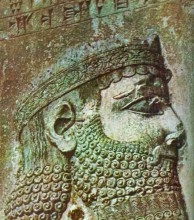
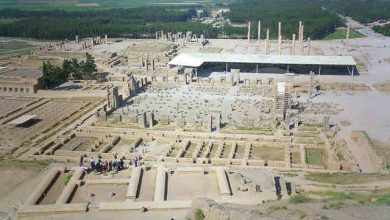
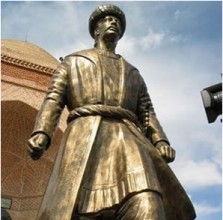
Greetings to Shamshad Amiri Khorasani. It is a very good article. Talshi language is completely our Tati language(Dansafhan Takstan Eshthard Segezabad Shal Asfarorin Ebrahimabad Khaiaraj Khoznin and…in Qazvin province)It is very close, you can say it is from the same language. Thank you for this article and how beautiful is that part of the conversation between Babak Khorramdin and Moatasem Malaun Abbasi.. Babak Khorramdin's name is very empty in the writings of Iran's generals and commanders. Thank you very much